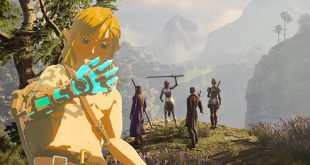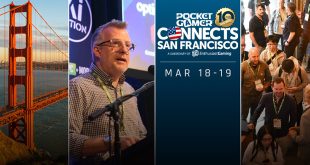Next week, San Francisco’s Moscone Center once again hosts Game Developer Conference, the industry’s annual stew of creative keynotes, technology conference sessions, middleware tutorials, cathartic post-mortems, earnest talking shops and awards ceremonies.
While E3 is an out-and-out commercial event, designed to sell more games, GDC is mostly about the art and craft of game-making. It’s the games show for game-makers.
We spoke to event director Meggan Scavio and brand director Simon Carless about how the show has evolved, how the speakers are persuaded to say something interesting and, perhaps most important of all, how the Moscone’s appalling Wi-Fi coverage is finally being sorted out…
How has GDC changed over the last few years?
Megan Scavio: The fluctuating situation with E3 has changed things the most. It brought a new element to GDC that wasn’t there before. A lot of the marketing and PR people took a bigger interest. There were more people wanting to use GDC to make those big announcements instead of using the smaller E3. But now that E3 is back they have a choice and we’re here to work with them, whichever option they take.
Simon Carless: We’re interested in announcements that are relevant to GDC and to the core audience that has paid to attend. All industry announcements eventually impact developers, but, for example, we were really pleased when Microsoft came and announced their XNA plans and the Xbox Live indie games plans or when Nintendo talked about Revolution very early in Wii’s life. But certain announcements aren’t so important to us. Developers are looking for inspiration that helps them do their jobs better. Is a $50 console price cut, for example, really doing that job? Probably not.
As an industry, do we really need to have an event in March and another in June?
Scavio: They attract different audiences. For the press it might seem like you’re doing double duty but these events have different roles to play.
Carless: E3 is about showcasing to the public, which is great and we have elements of that. GDC is about learning and concrete take-aways for developers.
How have the difficult economic conditions affected GDC?
Scavio: This year we lowered our prices for our partners for the first time ever, and we haven’t raised prices for several years previously. There isn’t anywhere else you can get a comprehensive state of game creation in one place. It’s a value proposition you can’t see elsewhere. It’s the center of the industry that that one week.
How do you go about generating compelling content?
Scavio: We have over 400 sessions. We have an advsory board of 18 people who go back and forth with the speakers, who mentor them and make sure they are right for the audience. It’s a huge process and it takes months.
The call for submissions is about 50% of our sessions and the rest is outlined by the advisory board, based on what what they want to see. We’re very hard on our speakers every year. Sessions are rated from one to five, with five being excellent. We’ve been on 4.1 for many years and last year we went up to 4.2, which is a big deal.
We want to push that further and have our best year ever. We have full multi-year scores for speakers and we’ll help people who want to boost how they connect.
It’s funny that the advisory board will look at the numbers going back to 2003. ‘Oh no, back then he only scored a 3.8!’, but it’s a process and we aren’t completely slaves to the numbers.
After the show is finished, how do you go about collecting, curating and distributing that content?
Carless: We are recording 250 of our conference sessions and making them available online with video and slides. That’s free to attendees and press. This way, you can miss sessions and catch up with them later.
We are also going to be fairly open, releasing select lectures for free to the public, released every week or two weeks. We’ve done some of that aleady, but we’ll be doing more. The things that we distribute for free will help publicize the show and it’s good to give back to the speakers who have given up their time. But it is a really significant expense for us and I hope people understand that.
Are you expecting coverage of the show to change in the era of social media?
Carless: We expect a lot of the coverage to come from the attendees. They are going to be blogging and Tweeting from the conference sessions. One thing we’ve changed is significant – Wi-Fi at the Moscone Center is generally not that awesome and this year we have made an effort to invest a significant amount of money in improving that.
We think it’s important for people to be able to Tweet and blog from the sessions. If you look at Twitter traffic mentioning GDC, even now it’s insane, multiple entries every hour, so just imagine what it will be like next week.
Scavio: We have always had Wi-Fi in the common areas and up to now that’s been spotty. But now it’s also in the conference rooms. We’ve beefed it up to accommodate all the attendees. We’ve even asked A&T for more coverage for iPhone users.
As an aside, someone on Twitter sent me a note saying they would love to see their Twitter name on their badge, and we agreed that’s a great idea and so now attendees can also do that.

 MCV/DEVELOP News, events, research and jobs from the games industry
MCV/DEVELOP News, events, research and jobs from the games industry



